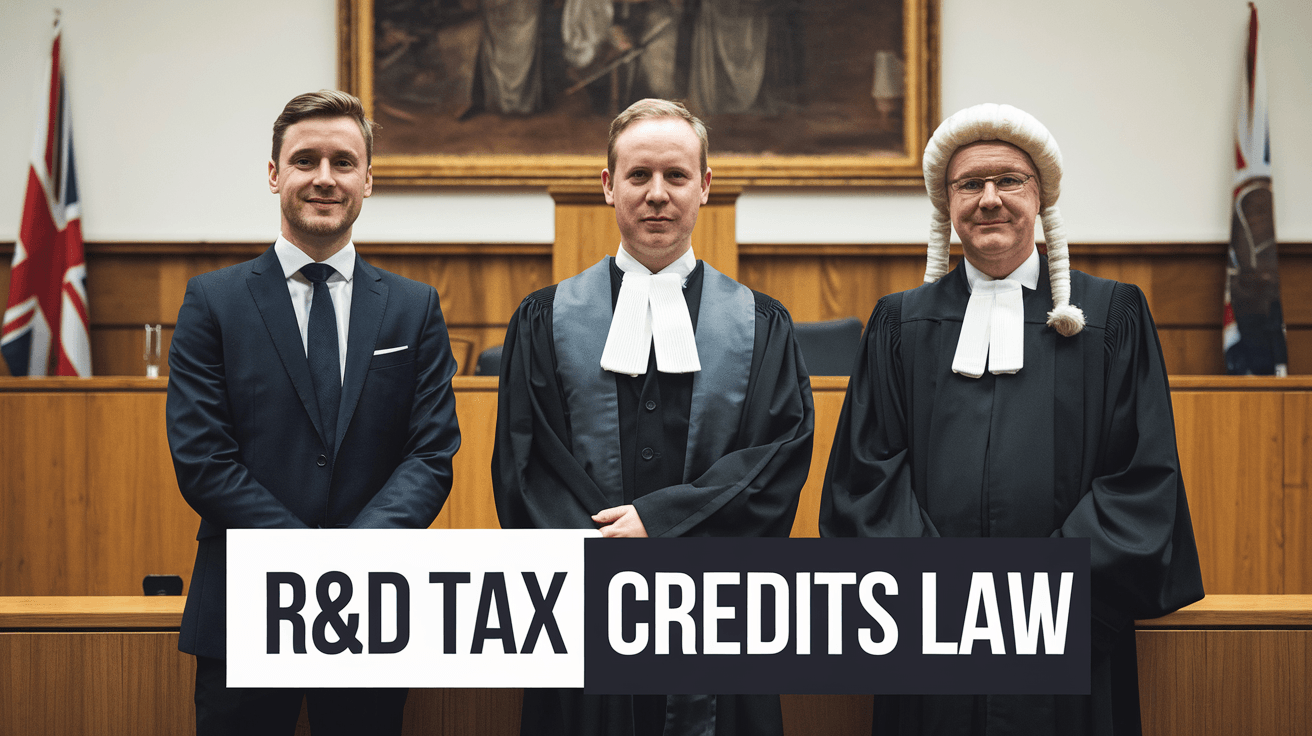R&D Tax Credits Bishopston Bristol
R&D tax credits in Bishopston, Bristol, are a valuable incentive provided by the UK government to encourage businesses to invest in innovation. These credits allow companies to reduce their corporation tax or receive a cash payment for their research and development expenditures. R&D Tax Credit Specialists can guide you through the process, ensuring you maximize your claims.
To qualify, your company must be incorporated in the UK, subject to corporation tax, and have carried out qualifying research and development activities. These activities involve resolving scientific or technological uncertainties, such as creating new products, processes, or services, or improving existing ones. Any business sector can undertake qualifying R&D activities, from construction and manufacturing to green tech and more. Qualifying costs include staff salaries, subcontractor fees, materials used in R&D projects, and software expenses.
R&D tax credits can significantly benefit Bishopston businesses by reducing their corporation tax liability or providing a cash payment, thereby increasing their cash flow and savings. SMEs can claim up to 33p for every £1 spent on qualifying R&D activities, resulting in substantial tax savings, with the average claim being around £54,000. Larger companies can claim under the Research and Development Expenditure Credit (RDEC) scheme, receiving up to 10p for every £1 spent on qualifying activities. This financial support is crucial for innovation and growth, giving businesses a competitive edge in their respective markets.

How Do R&D Tax Credits Benefit Bishopston Businesses?
R&D tax credits can significantly benefit Bishopston businesses by reducing their corporation tax liability or providing a cash payment, thereby increasing their cash flow and savings. These credits reward businesses for investing in research and development, which can be crucial for innovation and growth.
Financial Advantages
R&D tax credits offer Bishopston businesses substantial financial benefits. Small to medium-sized enterprises (SMEs) with fewer than 500 staff and less than €100 million turnover can claim up to 33p for every £1 spent on qualifying R&D activities. This can result in significant tax savings, with the average R&D tax credit claimed by SMEs being around £54,000.
For startups, R&D tax credits can be used to offset up to £500,000 in payroll tax liability per year for up to five years, providing an immediate cash infusion during critical early years.
Competitive Edge in Innovation
R&D tax credits give Bishopston businesses a competitive edge in innovation. By incentivizing investments in research and development, these credits encourage businesses to develop new products, processes, or services. This includes activities such as software development, engineering projects, and improvements to existing processes, all of which can qualify for tax relief.
These credits support businesses in various sectors, including technology, manufacturing, and green tech, helping them advance in science or technology and tackle scientific or technological uncertainties. This support enables businesses to innovate more effectively, making them more competitive in their respective markets.

Which Industries Commonly Claim R&D Tax Credits?
Companies across various industries in the UK are eligible to claim R&D tax credits, with some sectors being more prevalent in utilizing these credits due to the nature of their work. The main industries that commonly claim R&D tax credits include those that heavily invest in innovation and technological advancements.
Technology Sector
The Technology Sector, particularly the Information and Communication sector, is a significant beneficiary of R&D tax credits. This includes companies involved in software development, online media, and other technological innovations. For instance, businesses in this sector often claim for activities such as developing new software, improving existing software, and creating innovative ways of communication.
Manufacturing
Manufacturing is another industry that frequently claims R&D tax credits. This sector is one of the largest contributors to the UK's GDP and relies heavily on R&D to develop new products, improve existing processes, and comply with changing industry standards. Manufacturing companies can claim for activities like creating prototypes, testing new materials, and streamlining manufacturing processes.
Life Sciences
The Life Sciences sector, including Healthcare and Pharmaceuticals, is also a major claimant of R&D tax credits. Companies in this sector focus on developing new treatments, improving existing products, and reducing side effects of pharmaceuticals. Activities such as testing new product prototypes and developing software solutions for electronic medical records are eligible for R&D tax relief.
Others
Other industries that commonly claim R&D tax credits include Engineering, Construction, and Professional, Scientific, and Technical sectors. These industries often engage in activities like developing new materials, improving efficiency, and innovating processes. For example, construction companies can claim for R&D activities related to new building techniques and materials, while engineering firms can claim for developing bespoke solutions and improving manufacturing systems.

What Qualifies as R&D Under UK Tax Law?
To qualify as R&D under UK tax law, your project must seek an advance in science or technology by overcoming scientific or technological uncertainties. This advance must benefit the overall field, not just your business.
Qualifying Activities
Qualifying R&D activities include projects that aim to achieve an advance in overall knowledge or capability in a field of science or technology. Here are some key points:
- Advance in Science or Technology: The project must look for an advance in the field, which means it should contribute to the overall knowledge or capability in science or technology, not just your company's own state of knowledge or capability.
- Overcoming Uncertainties: The project must encounter and try to overcome scientific or technological uncertainties. This means the solution to the problem must not be readily available or deducible by a competent professional working in the field.
- Direct and Indirect Activities: Both directly contributing and indirectly qualifying activities can be eligible. This includes work on developing your own products or services, and in some cases, work done on client projects.
Excluded Activities
Not all activities qualify for R&D tax relief. Here are some exclusions:
- Non-Scientific/Technological Uncertainties: Work to overcome non-scientific or technological uncertainties does not qualify as R&D. This includes projects that are innovative from a commercial or business perspective but do not involve an advance in science or technology.
- Arts, Humanities, and Social Sciences: Projects in the arts, humanities, and social sciences, including economics, do not qualify for R&D tax relief.
- Routine or Standard Practices: Activities that are part of routine or standard practices in your industry do not qualify. The project must involve a genuine attempt to resolve scientific or technological uncertainties.

How Are R&D Tax Credits Calculated?
R&D tax credits are calculated based on the qualifying expenditure your company has incurred on research and development activities. The calculation process differs depending on whether your company is eligible for the SME Scheme or the RDEC Scheme.
SME Scheme
For companies eligible under the SME Scheme, the calculation involves enhancing your qualifying R&D expenditure. As of April 2023, the enhancement rate is 86% of the qualifying expenditure. For a profit-making company, this enhanced amount is deducted from the taxable profits, and then the corporation tax rate (currently 25%) is applied to this reduced profit.
For example, if your company spent £100,000 on qualifying R&D activities, the enhanced expenditure would be £100,000 x 186% = £186,000. This results in a corporation tax saving of £20,650 (assuming a 25% corporation tax rate).
For loss-making companies, the enhanced expenditure can be surrendered for a cash payment. The rate for this surrender is 10% of the enhanced expenditure. So, for £100,000 spent on R&D, the enhanced expenditure would be £186,000, and the cash payment would be £18,600.
RDEC Scheme
The RDEC Scheme is applicable to larger companies or those that do not meet the SME criteria. Under this scheme, the tax credit is calculated as a percentage of the qualifying R&D expenditure. As of April 2023, the RDEC rate has increased to 20%.
For instance, if your company spent £100,000 on qualifying R&D activities, you would receive a tax credit of £20,000. This credit is taxable as trading income, resulting in a net benefit of £15,000 after applying the corporation tax rate.

What Are the Recent Changes to UK R&D Tax Credits?
The UK government has introduced significant changes to the R&D tax credits scheme, aimed at simplifying the process and aligning it more closely with international standards. These changes include the merger of the SME R&D Tax Relief and the Research and Development Expenditure Credit (RDEC) schemes.
Policy Updates
- Merger of Schemes: The SME R&D Tax Relief and RDEC schemes have been merged into a single R&D Tax Relief scheme for accounting periods starting on or after 1 April 2024, to simplify the application process and make it more uniform.
- R&D Intensity Threshold: The threshold for defining an R&D-intensive SME has been reduced from 40% to 30% of total expenditure, allowing more companies to qualify for higher tax credits.
- Tax Credit Rates: The RDEC rate has increased from 13% to 20%, and loss-making R&D-intensive SMEs can claim a 27% tax credit. The SME credit rate has been reduced from 14.5% to 10% for non-R&D intensive loss-making entities.
- Digital Submission: All R&D claims must now be submitted online, and must include additional information such as a breakdown of the types of R&D expenditure and be supported by a named officer of the company.
- PAYE and NIC Cap: A relief cap based on PAYE and NIC has been introduced to ensure the tax relief benefits UK companies and contractors.
- Qualifying Costs: A wider range of cost categories, including pure mathematics and data and cloud computing costs, are now eligible for tax relief.
Impact on Businesses
- Simplified Process: The merger of the schemes is intended to make the application process easier and more streamlined, although it still retains complexities, especially for companies that fluctuate between R&D intensive and non-intensive statuses.
- Increased Scrutiny: HMRC has increased its scrutiny of R&D claims to combat misuse and ensure compliance, making it advisable for businesses to seek professional advice when applying for tax credits.
- Financial Impact: The changes have resulted in reduced tax credits for some SMEs, particularly break-even and profit-making SMEs, while R&D-intensive loss-making SMEs benefit from higher rates. The increased corporation tax rate also affects the after-tax impact of R&D tax credits.
- Grace Period: Companies that fail to meet the R&D intensity threshold due to unexpected circumstances can maintain their R&D-intensive status for a one-year grace period, simplifying temporary fluctuations.

How Can Bishopston Businesses Apply for R&D Tax Credits?
To apply for R&D tax credits, Bishopston businesses must follow a specific process and gather the necessary documentation. Here’s a step-by-step guide to help you through the application.
Application Process
- Determine Eligibility: Ensure your business is in one of the targeted industries such as manufacturing, life sciences, information technology, aviation and aerospace, homeland security and defense, cloud information technology, marine sciences, materials science, or nanotechnology.
- Claim Federal Credit: You must claim and be allowed a research credit against federal income tax for qualified research expenses under Section 41 of the Internal Revenue Code (IRC). This involves filing IRS Form 6765 (Credit for Increasing Research Activities) and Form 3800 (General Business Credit).
- Obtain Certification: Secure a certification letter from the Florida Department of Commerce confirming that your business is an eligible target industry business. This letter is essential for your application.
- Submit Application: Apply to the Florida Department of Revenue for an allocation of the Florida Research and Development Credit. The application process typically opens on March 20 of each year for the previous calendar year's expenses.
- Provide Details: Include all relevant details about your qualified research expenses incurred in Florida. This may involve in-house research expenses or contract research expenses that qualify under Section 41 of the IRC.
Required Documentation
- Federal Forms: Attach federal Form 6765 (Credit for Increasing Research Activities) and Form 3800 (General Business Credit) to your Florida Form F-1120 (Florida Corporate Income Tax Return).
- Certification Letter: Include the certification letter from the Florida Department of Commerce that confirms your business is an eligible target industry business.
- Expense Records: Provide detailed records of your qualified research expenses, including salaries, supplies, and contract research expenses. Ensure these expenses meet the criteria outlined under Section 41 of the IRC.
- Business Records: Submit any additional business records that support your application, such as technical documents and financial records.
By following these steps and gathering the required documentation, Bishopston businesses can successfully apply for R&D tax credits and benefit from the associated tax savings.

What Common Mistakes Should Be Avoided When Claiming?
When claiming deductions and credits on your tax return, it is crucial to avoid mistakes that can lead to penalties, interest, and even legal issues. Here are some key mistakes to watch out for:
Overclaiming
Overclaiming expenses or deductions can get you into trouble with HMRC. This mistake often occurs when individuals claim personal expenses as business expenses. For instance, if you are self-employed, you should only claim expenses that are directly related to your business, such as office rent, equipment, and travel expenses. Ensuring you have accurate records and can justify each claim is essential to avoid this mistake.
Underclaiming
Underclaiming expenses can result in an unnecessarily high tax bill. Many people are unaware of the expenses they are entitled to claim, such as office supplies, travel, and equipment if they are self-employed. Familiarize yourself with the list of allowable expenses and keep clear records of all your business receipts to ensure you claim the correct amount.
Documentation Errors
Documentation errors can lead to significant issues with your tax return. One common mistake is failing to keep accurate records of your income and expenses. This can lead to underreporting income or overreporting expenses, triggering an audit or resulting in penalties. Ensure you keep all receipts, invoices, and bank statements, and use accounting software or spreadsheets to track your finances. Additionally, missing or incorrect details such as your Unique Taxpayer Reference (UTR) or National Insurance (NI) number can cause your tax return to be rejected by HMRC.

How Can Professional Advice Enhance R&D Tax Credits Claims?
Professional advice can significantly enhance R&D tax credits claims by ensuring compliance with complex HMRC regulations and maximizing the financial benefits. Experts in R&D tax credits can help you navigate the intricate process of identifying and documenting eligible expenses.
Role of Tax Credit Specialists
R&D Tax Credit Specialists play a crucial role in several key areas:
- Eligibility Assessments: They help determine if your projects qualify for R&D tax credits by assessing whether they aim to advance science or technology and resolve scientific or technological uncertainties.
- Documentation and Record-Keeping: Specialists ensure that all necessary documentation, including timelines of activities and detailed records of costs such as staff wages, software, and materials, are accurately maintained to support your claim.
- Claim Preparation and Submission: They prepare and submit the claims to HMRC, ensuring all information is correctly presented and meets the required standards.
- Optimizing Claims: Experts identify all qualifying projects and expenses, thereby increasing the value of your R&D tax credits.
Benefits of Expert Guidance
The benefits of seeking expert guidance include:
- Maximized Financial Efficiency: Specialists ensure that you claim the maximum amount you are eligible for, which can significantly reduce your corporation tax liability or provide a payable tax credit.
- Compliance and Risk Mitigation: Expert advice helps in avoiding common pitfalls and ensuring compliance with HMRC regulations, reducing the risk of claims being invalidated.
- Simplified Process: The complex process of claiming R&D tax credits is streamlined, allowing you to focus on your business while the experts handle the tax aspects.
- Additional Tax Incentives: Specialists can also guide you through other tax incentives, such as the Patent Box, which can further reduce your tax liabilities.
In Conclusion
R&D tax credits in Bishopston, Bristol, are a powerful tool for businesses to reduce their tax liability and boost innovation. These credits, offered by the UK government, reward companies for investing in research and development, allowing them to claim relief on Corporation Tax for expenses related to qualifying R&D activities.
By claiming R&D tax credits, Bishopston businesses can significantly enhance their financial position. For SMEs, this can mean claiming up to 33p for every £1 spent on qualifying R&D activities, resulting in substantial tax savings, with average claims ranging from £43,000 to over £100,000. Larger companies can also benefit under the RDEC scheme, claiming up to 10p for every £1 spent.
To maximize the benefits of R&D tax credits, it is crucial to identify all qualifying projects and expenses accurately. R&D Tax Credit Specialists can provide invaluable guidance in this process, ensuring compliance with HMRC regulations and optimizing the value of your claims. Their expertise in eligibility assessments, documentation, and claim preparation can streamline the process and help you secure the maximum financial benefits.
If you are a business in Bishopston, Bristol, investing in innovation, do not miss out on the valuable tax relief available. Contact R&D Tax Credit Specialists today to explore how you can benefit from R&D tax credits and take your business to the next level. With their expert help, you can ensure you are claiming the full amount you are eligible for, freeing up more resources to invest in future projects and drive growth.

